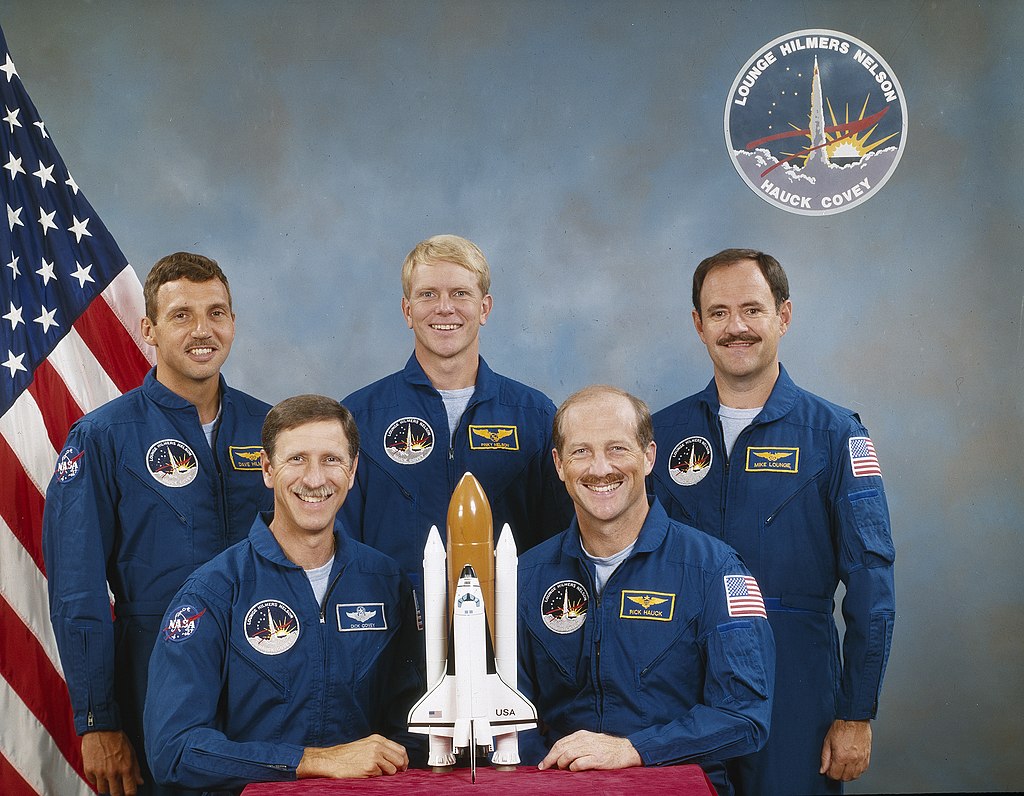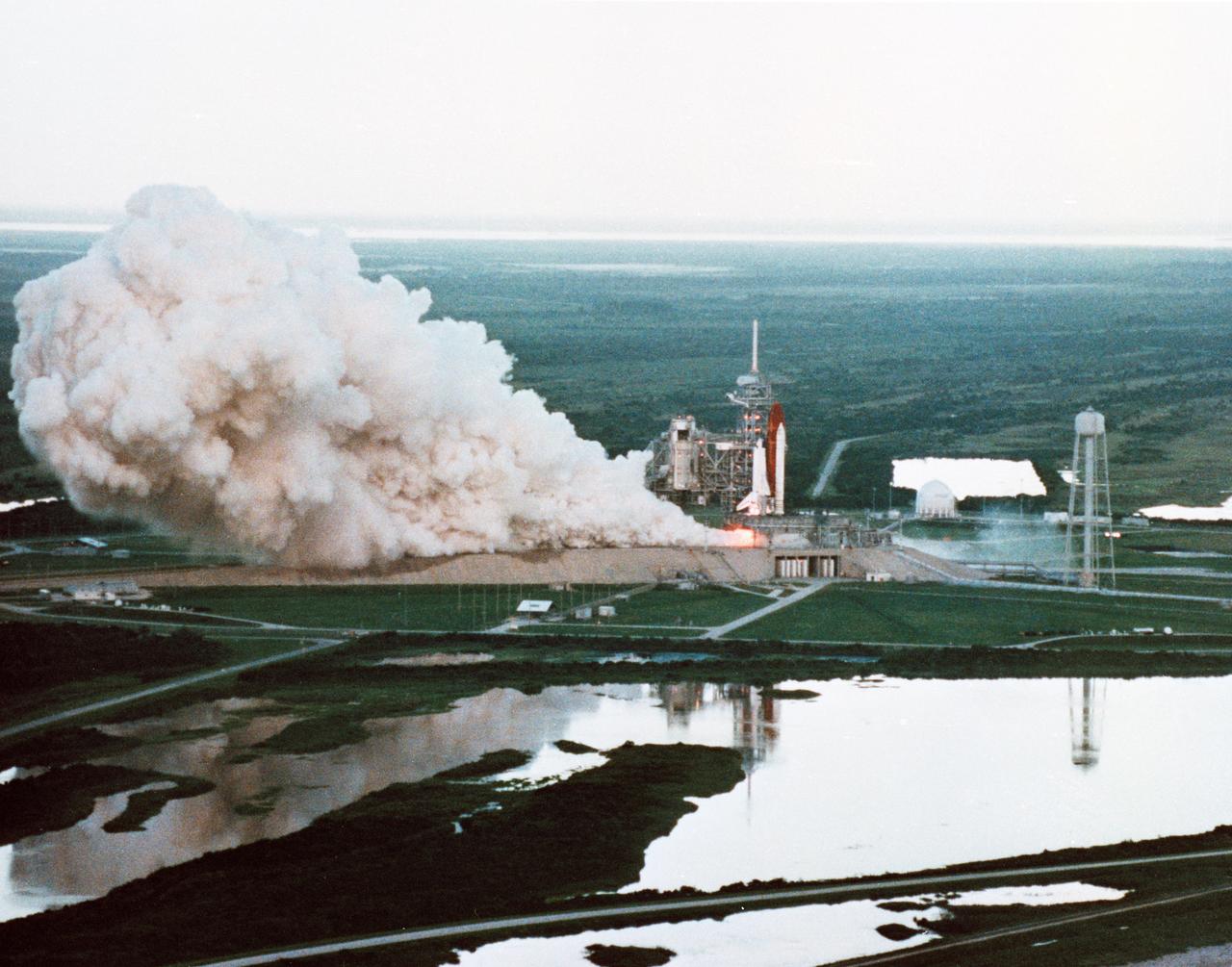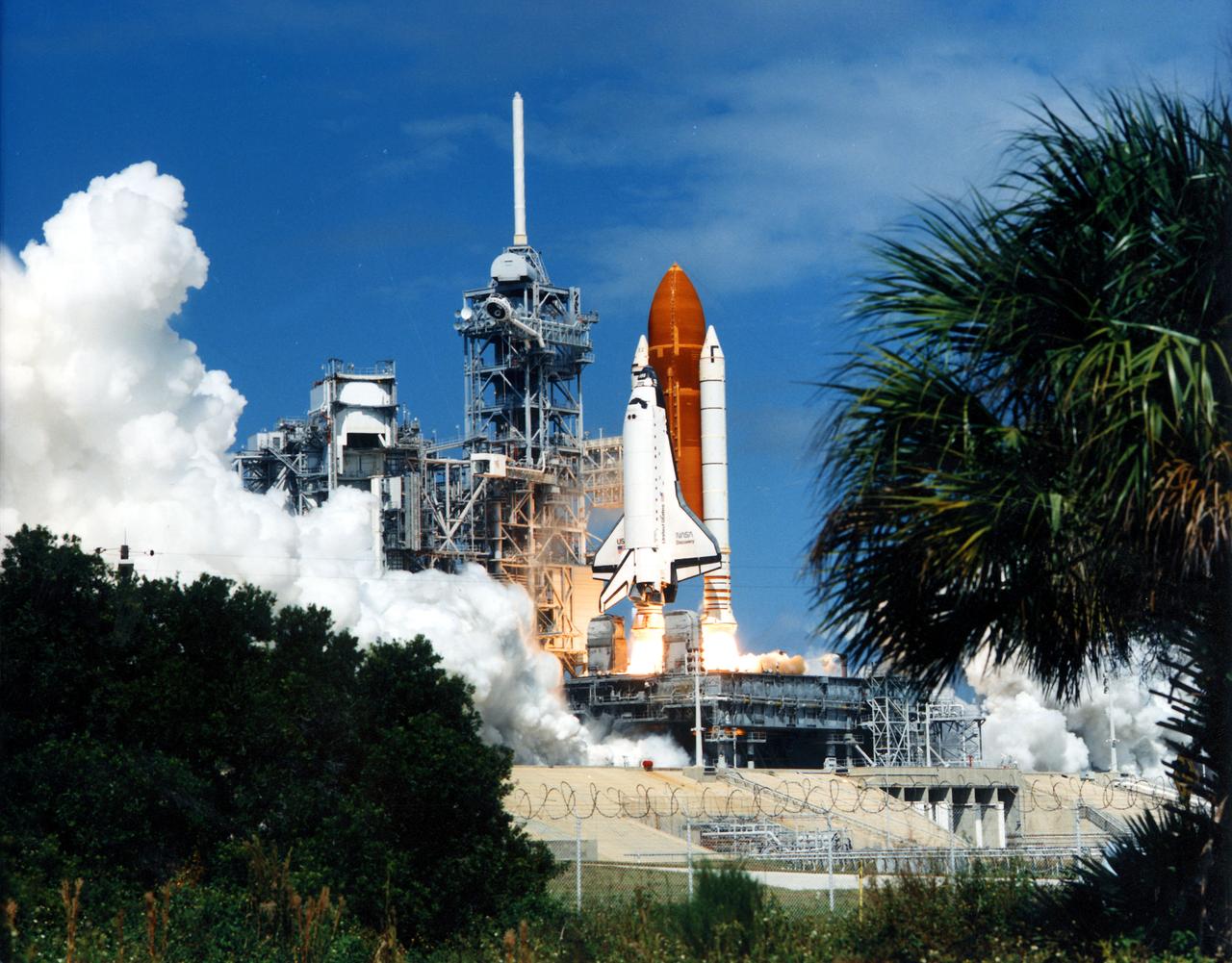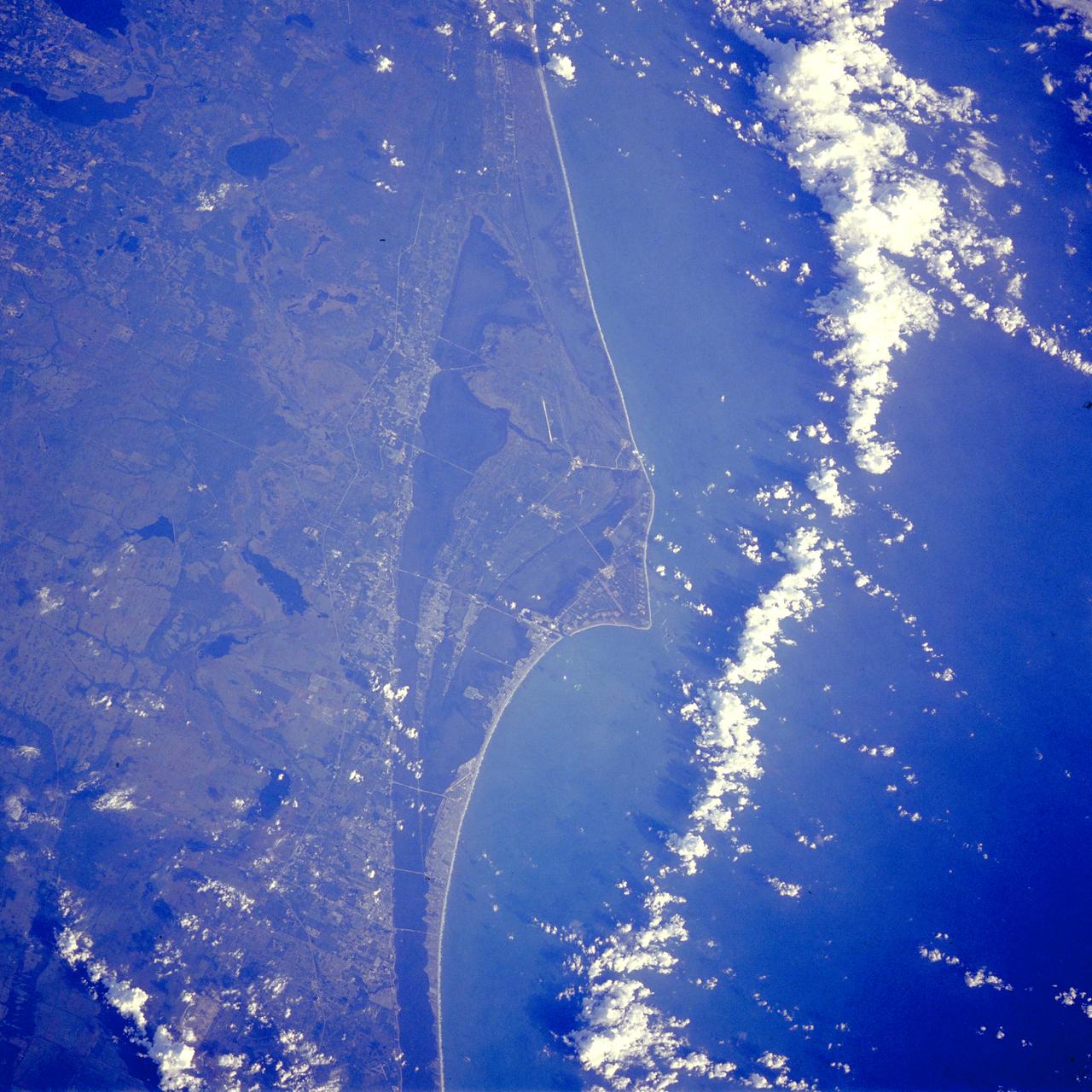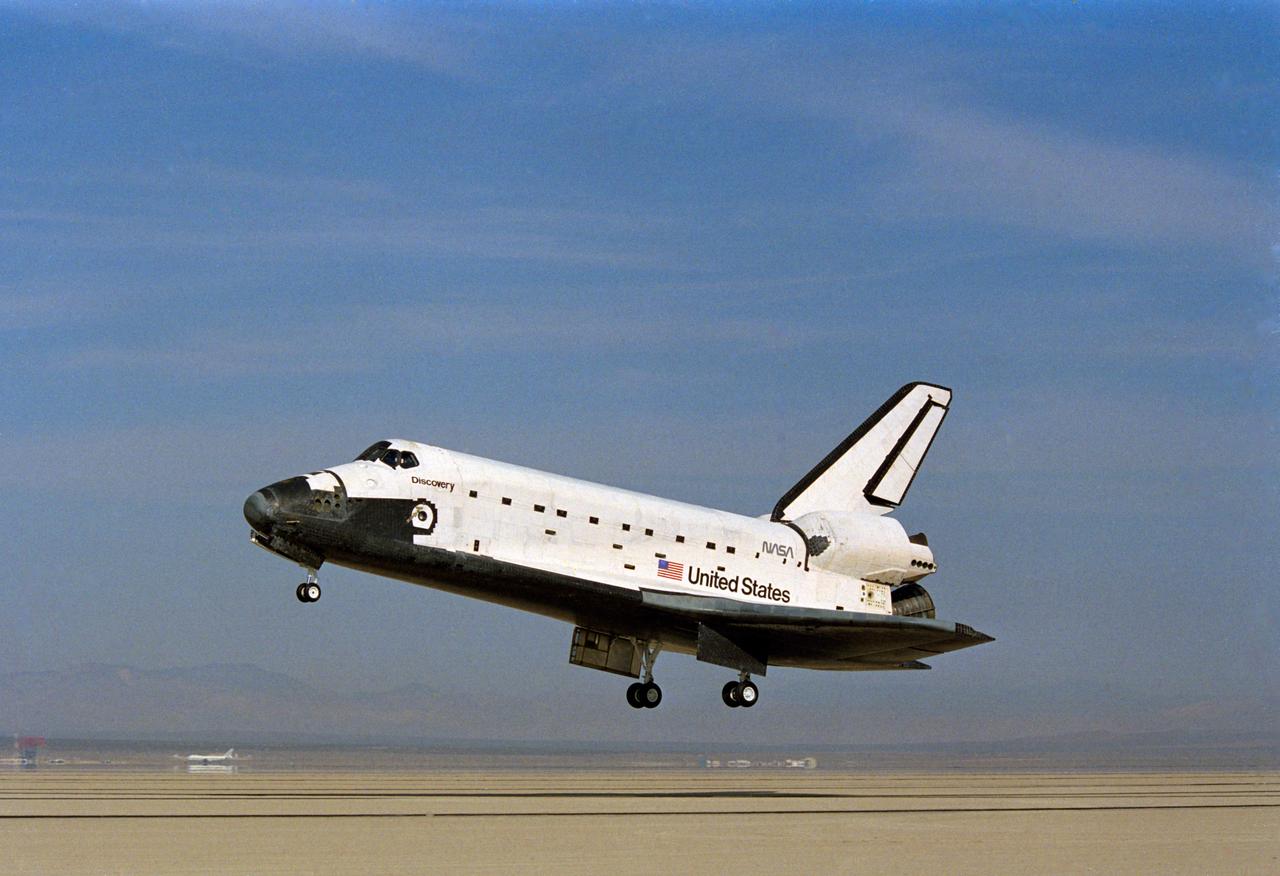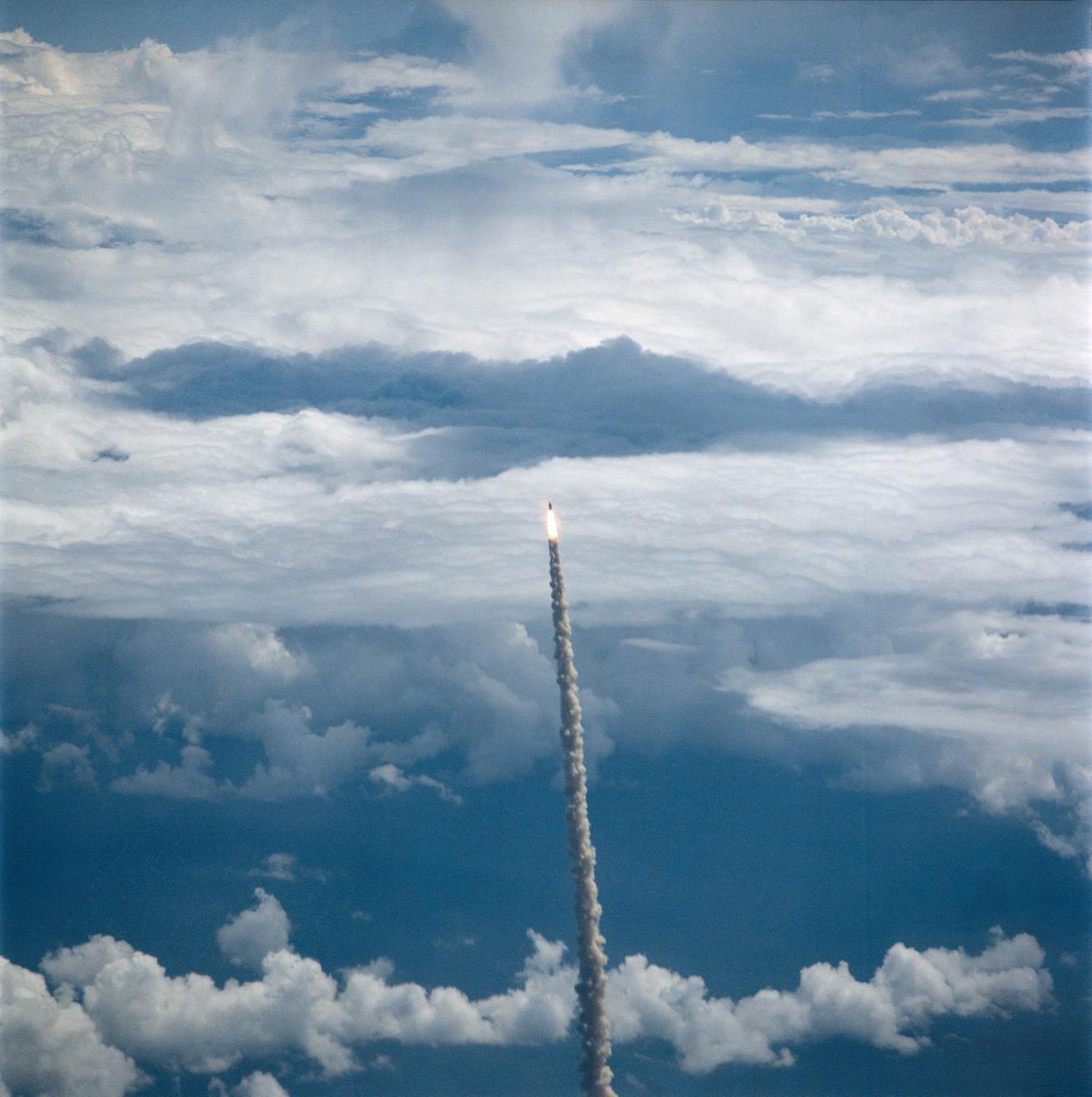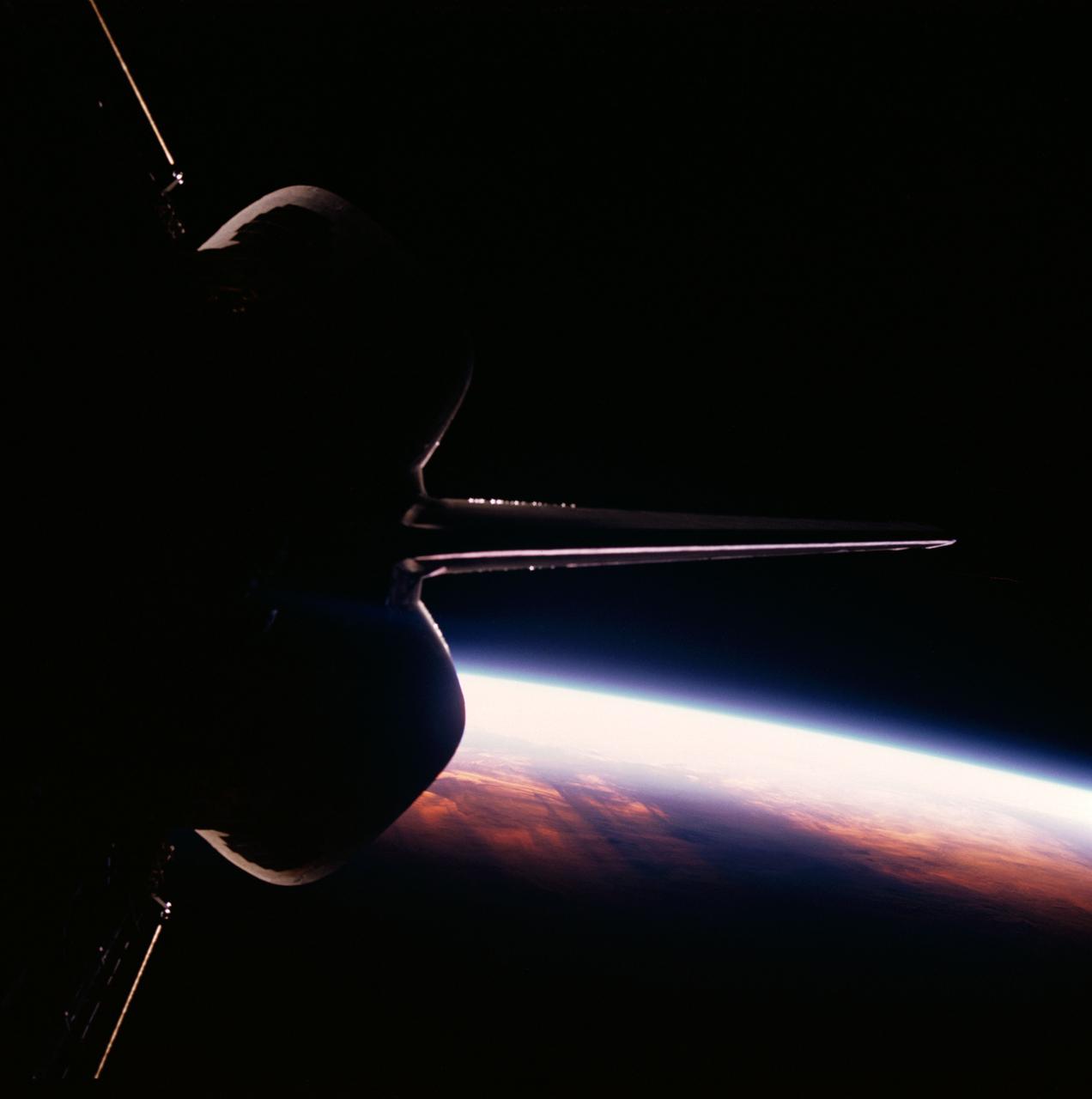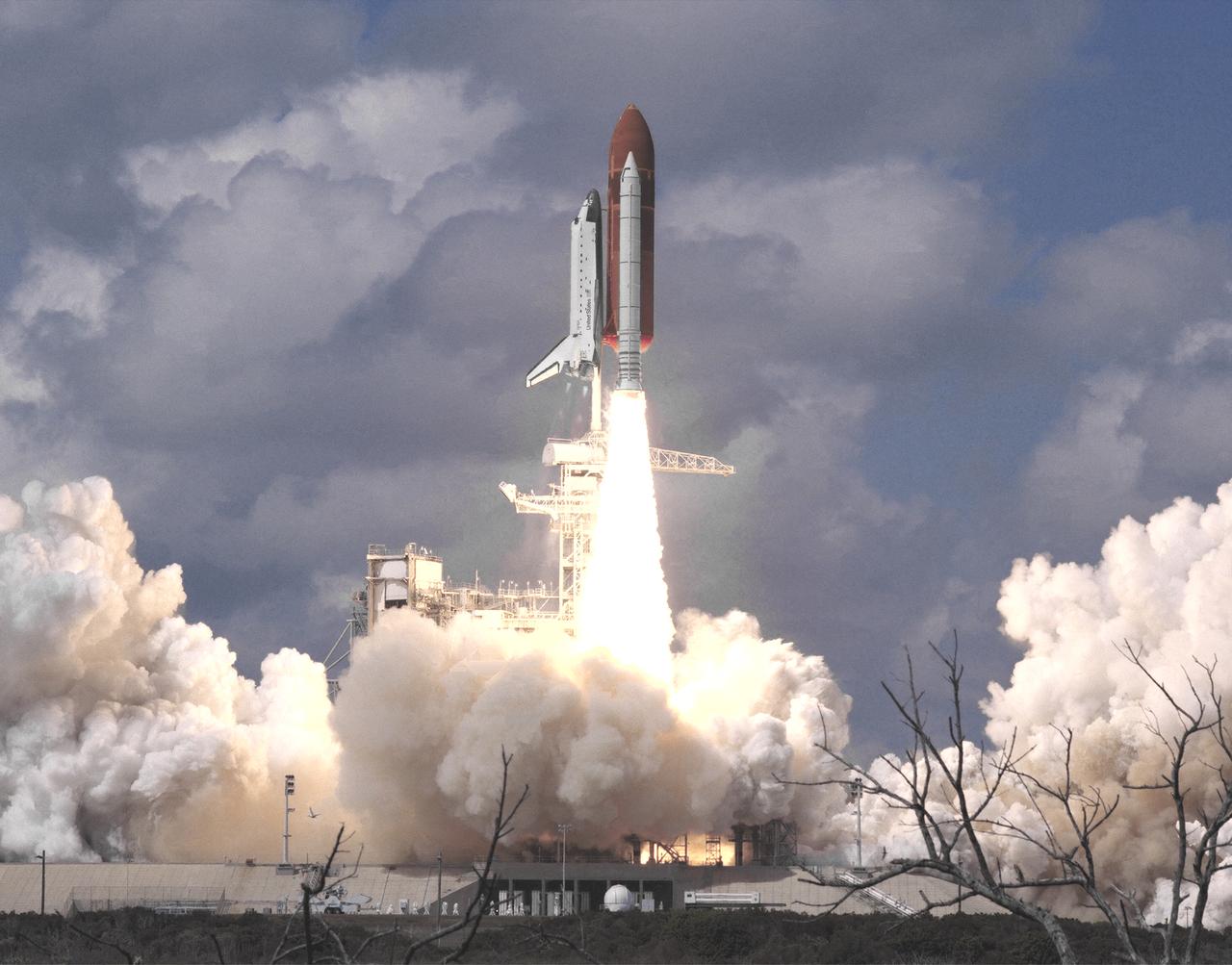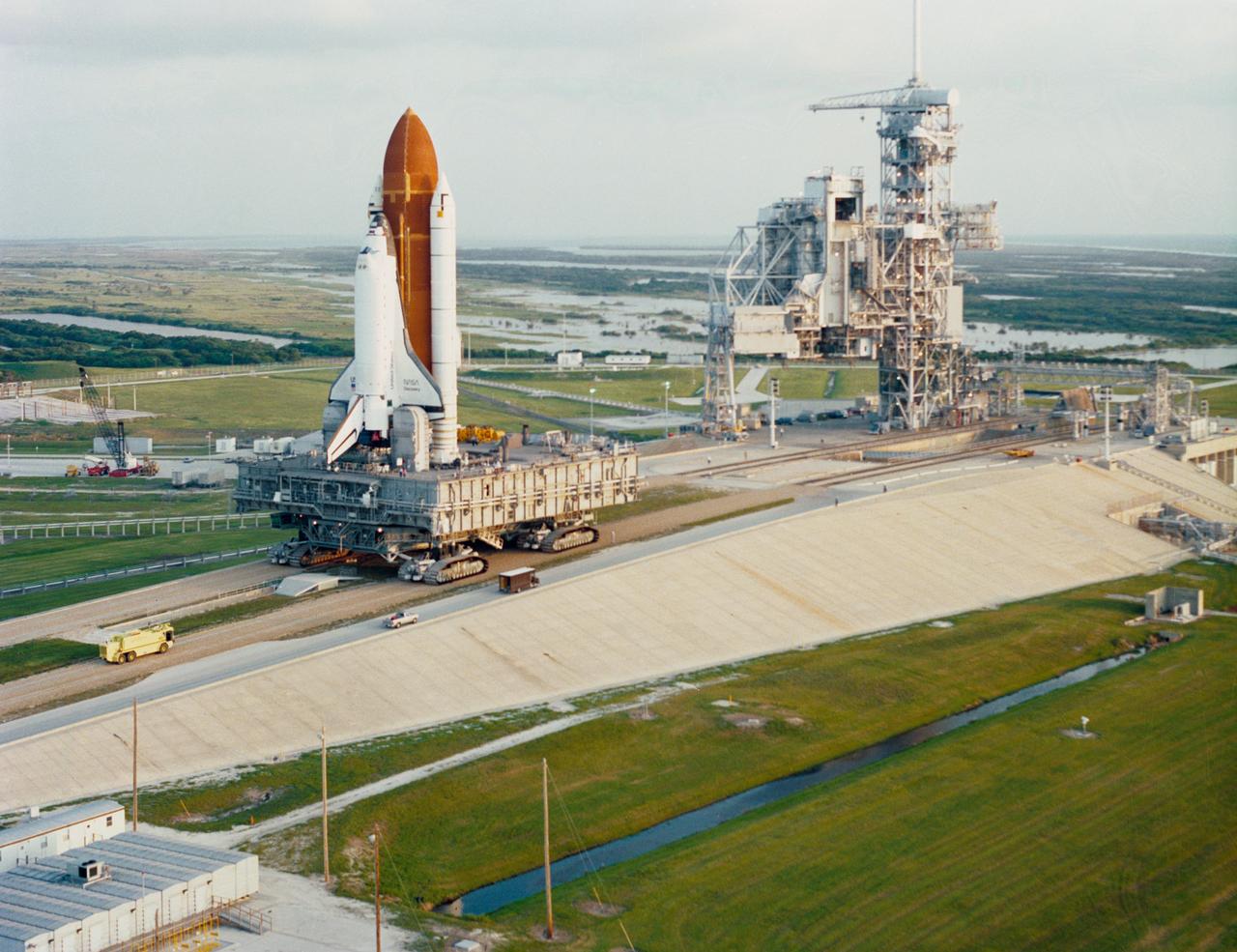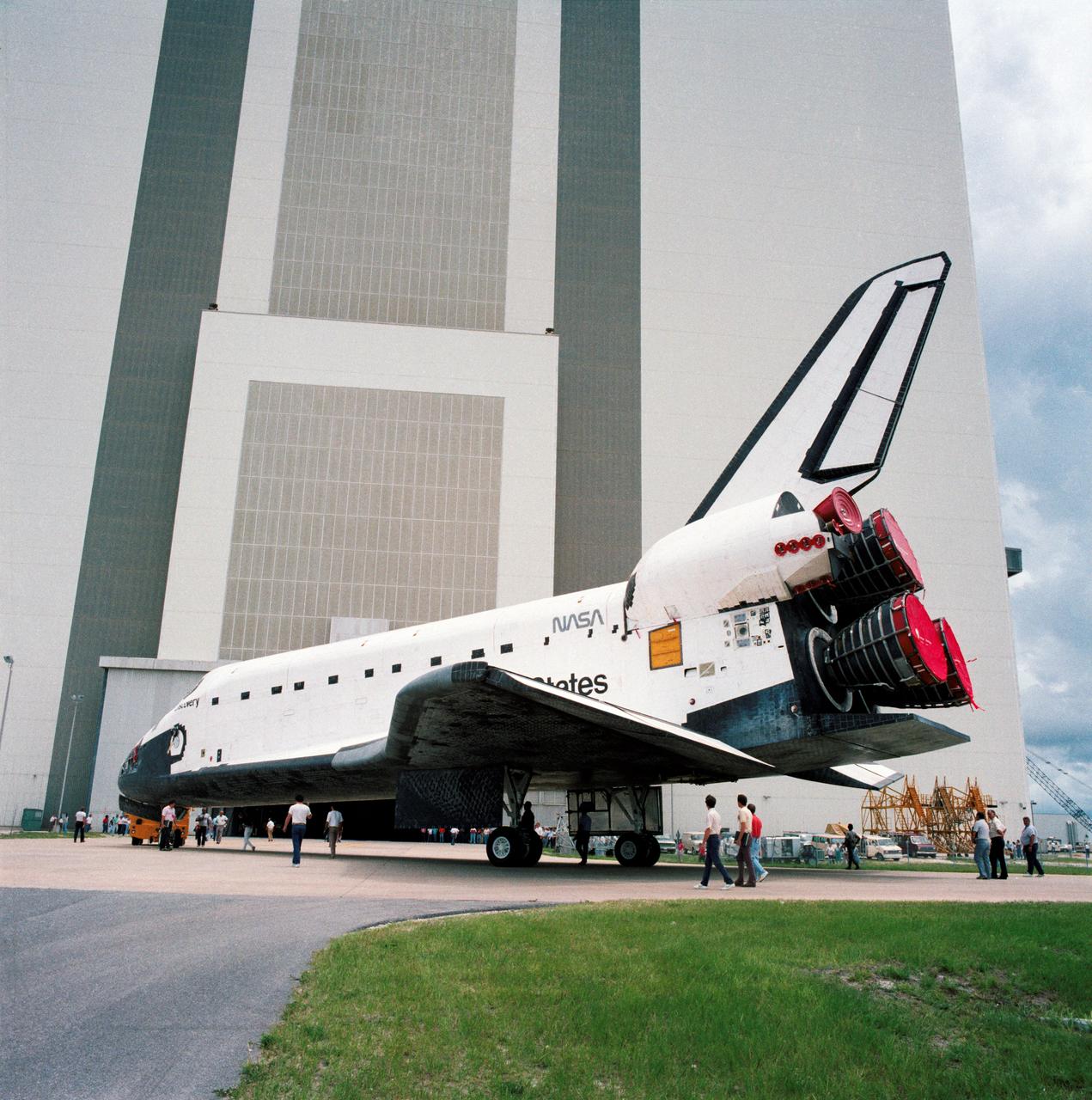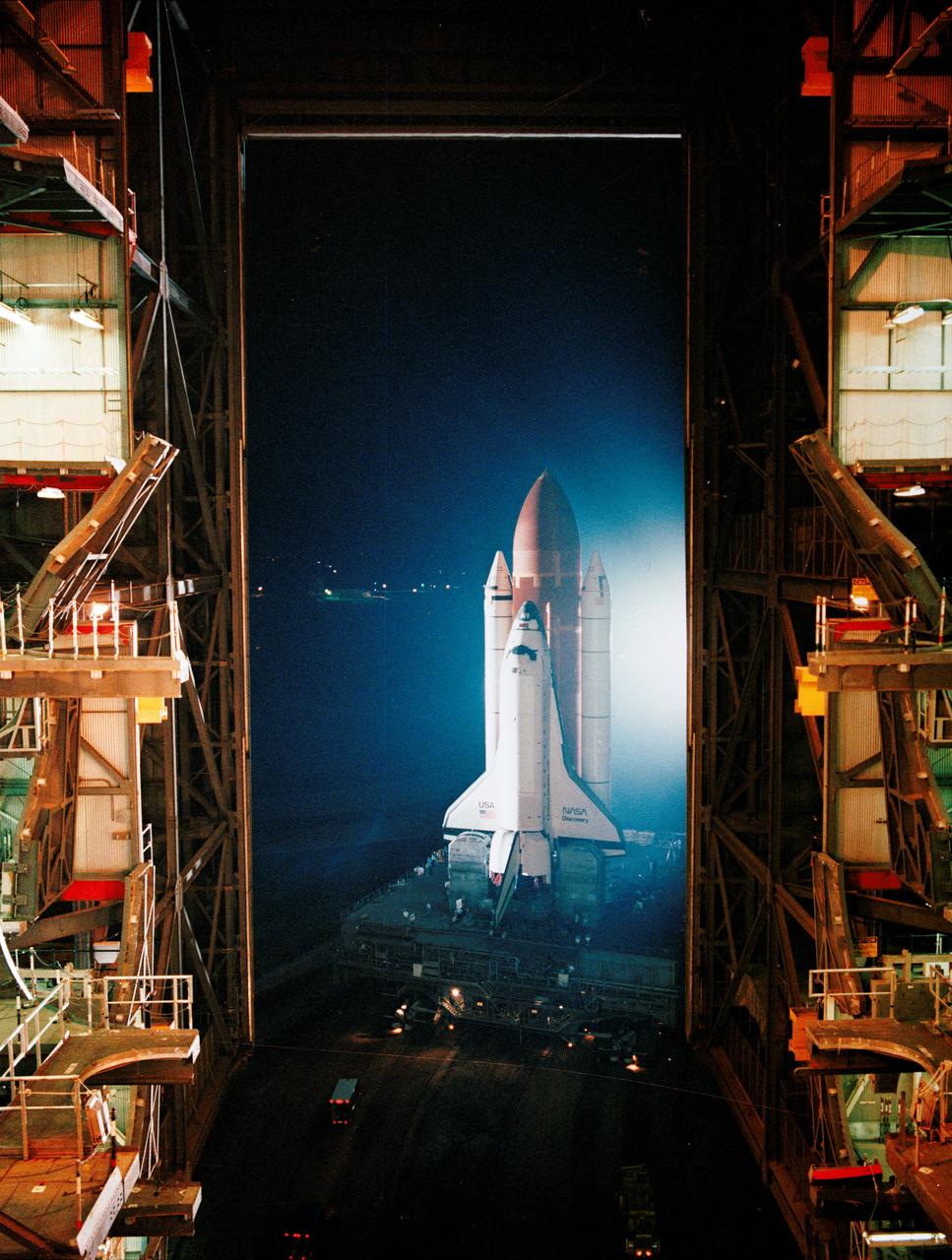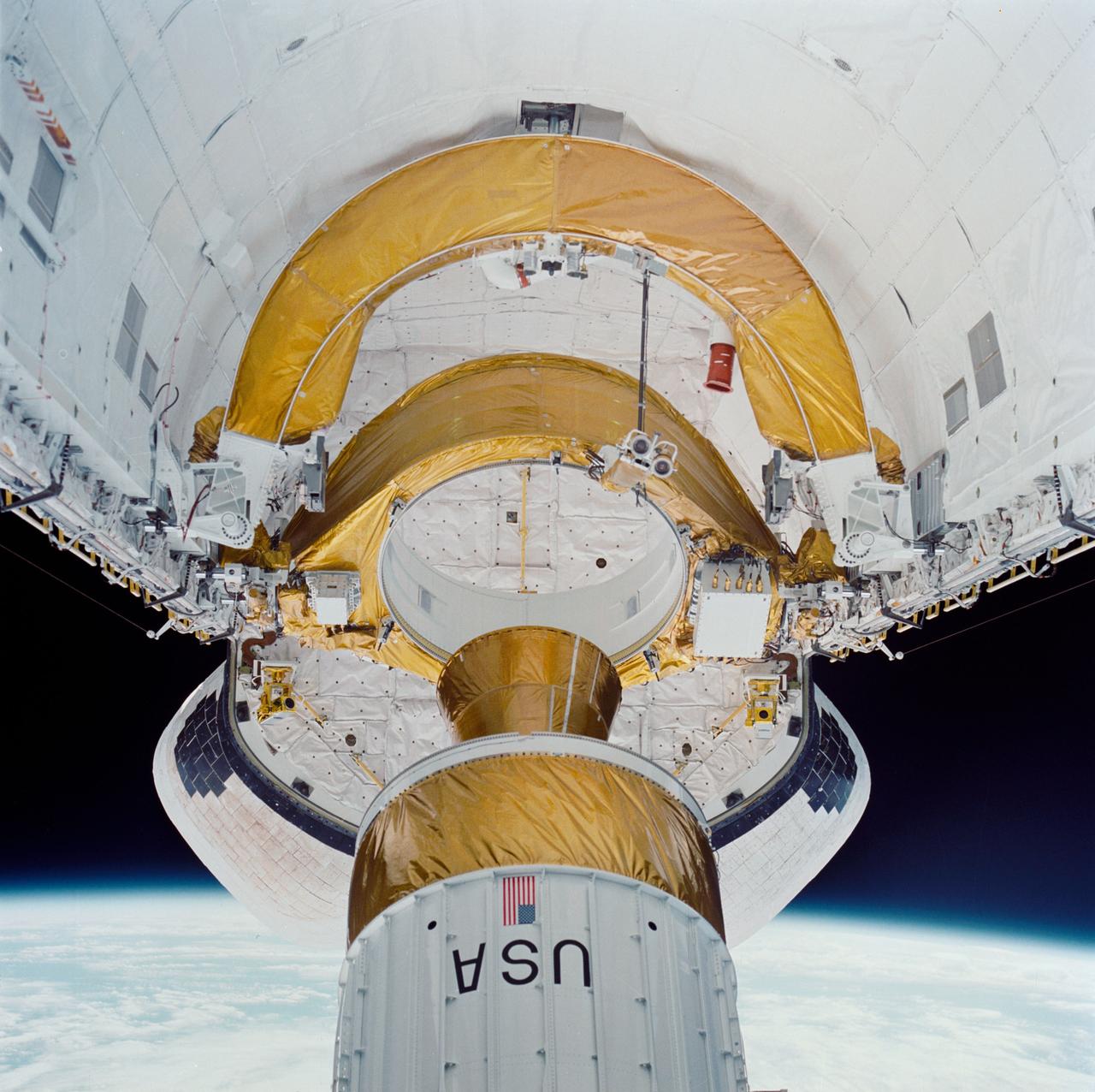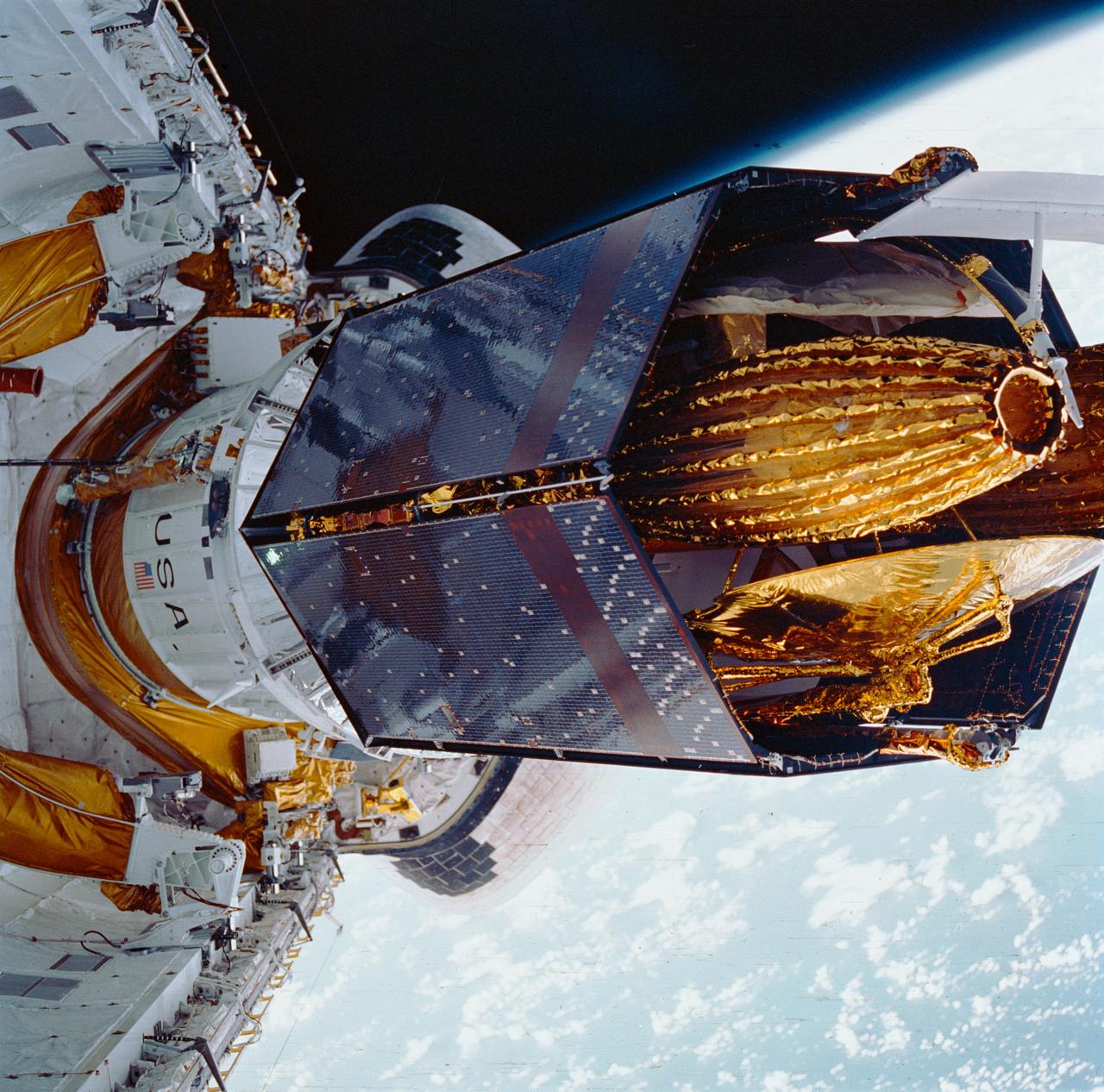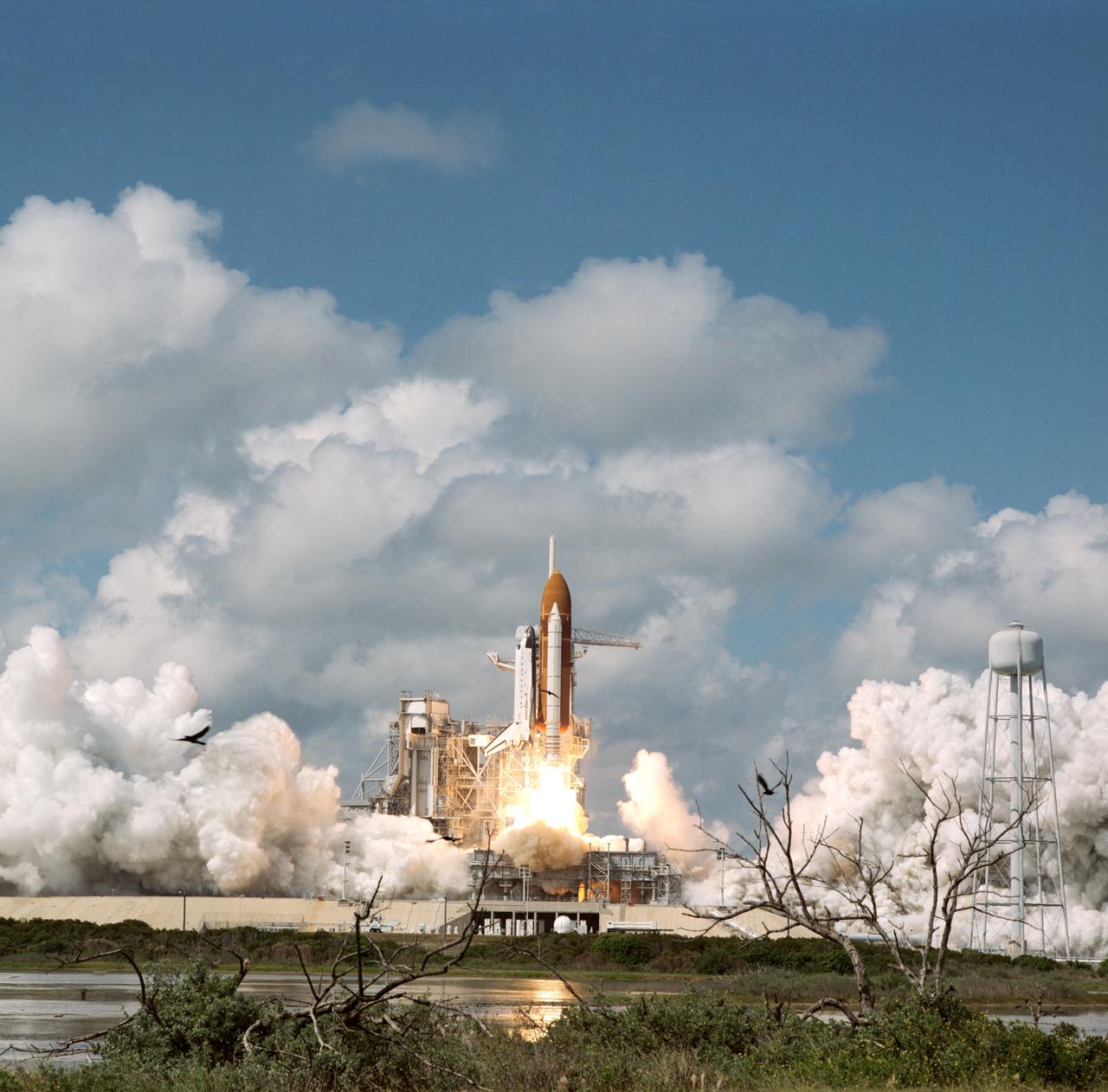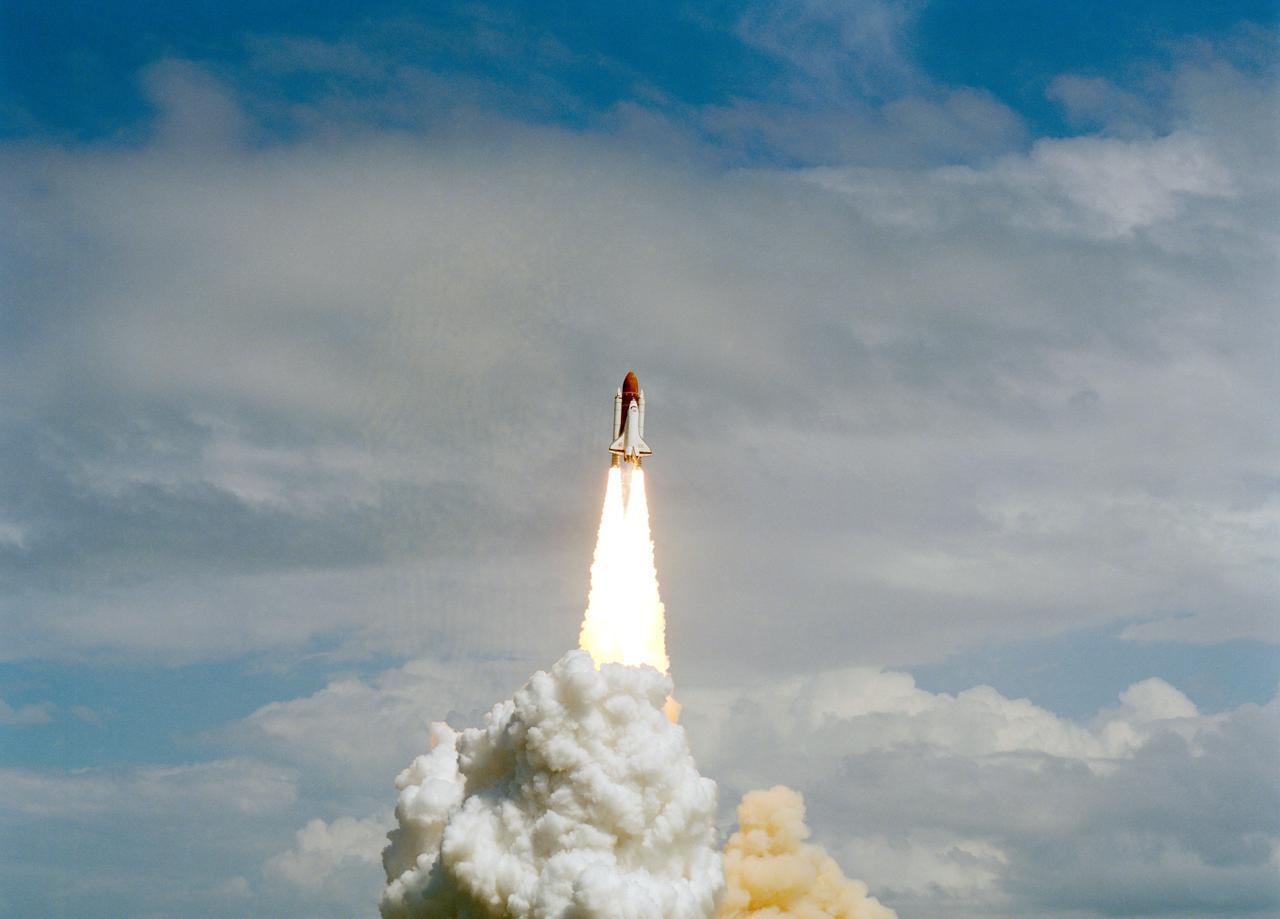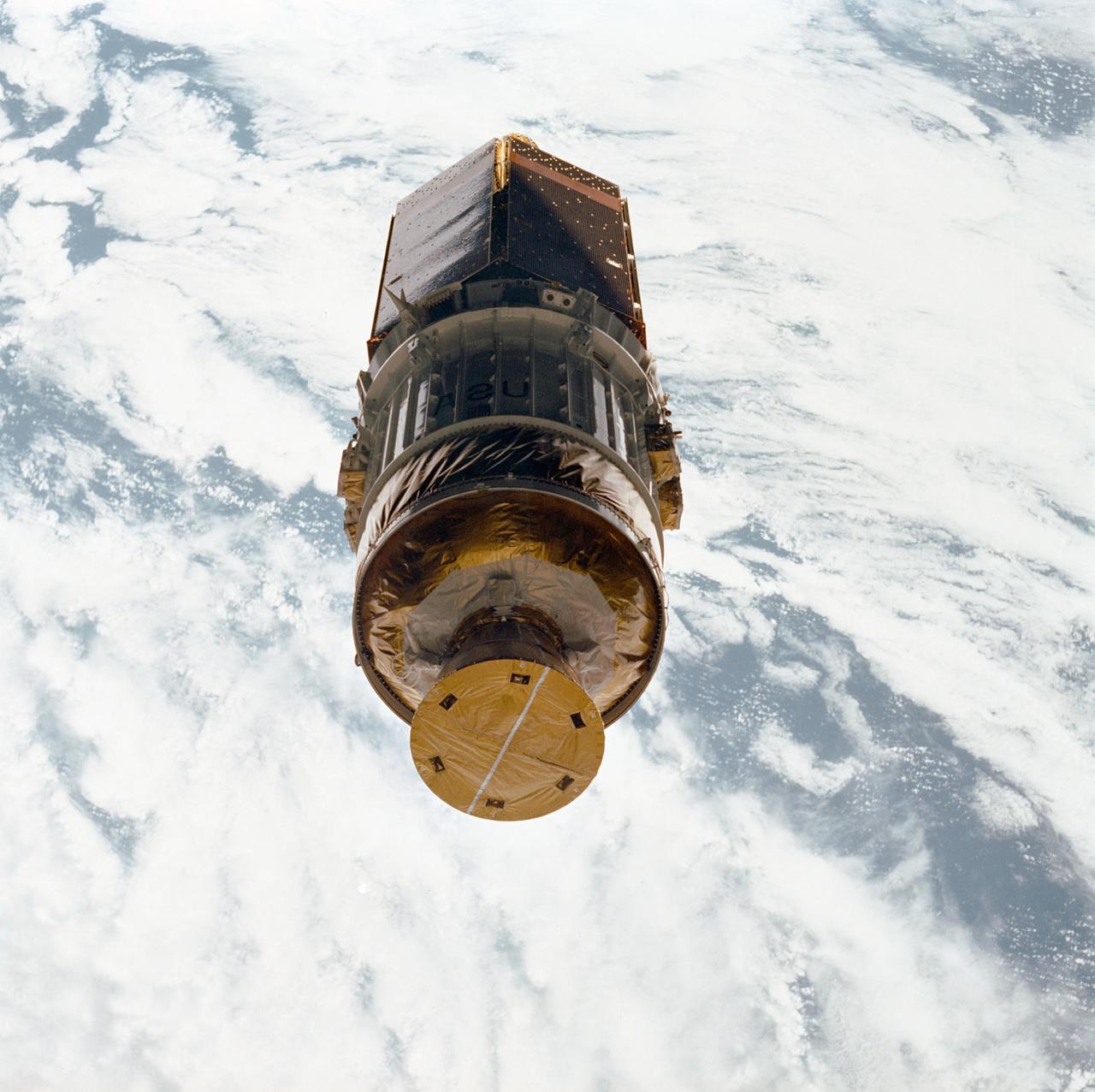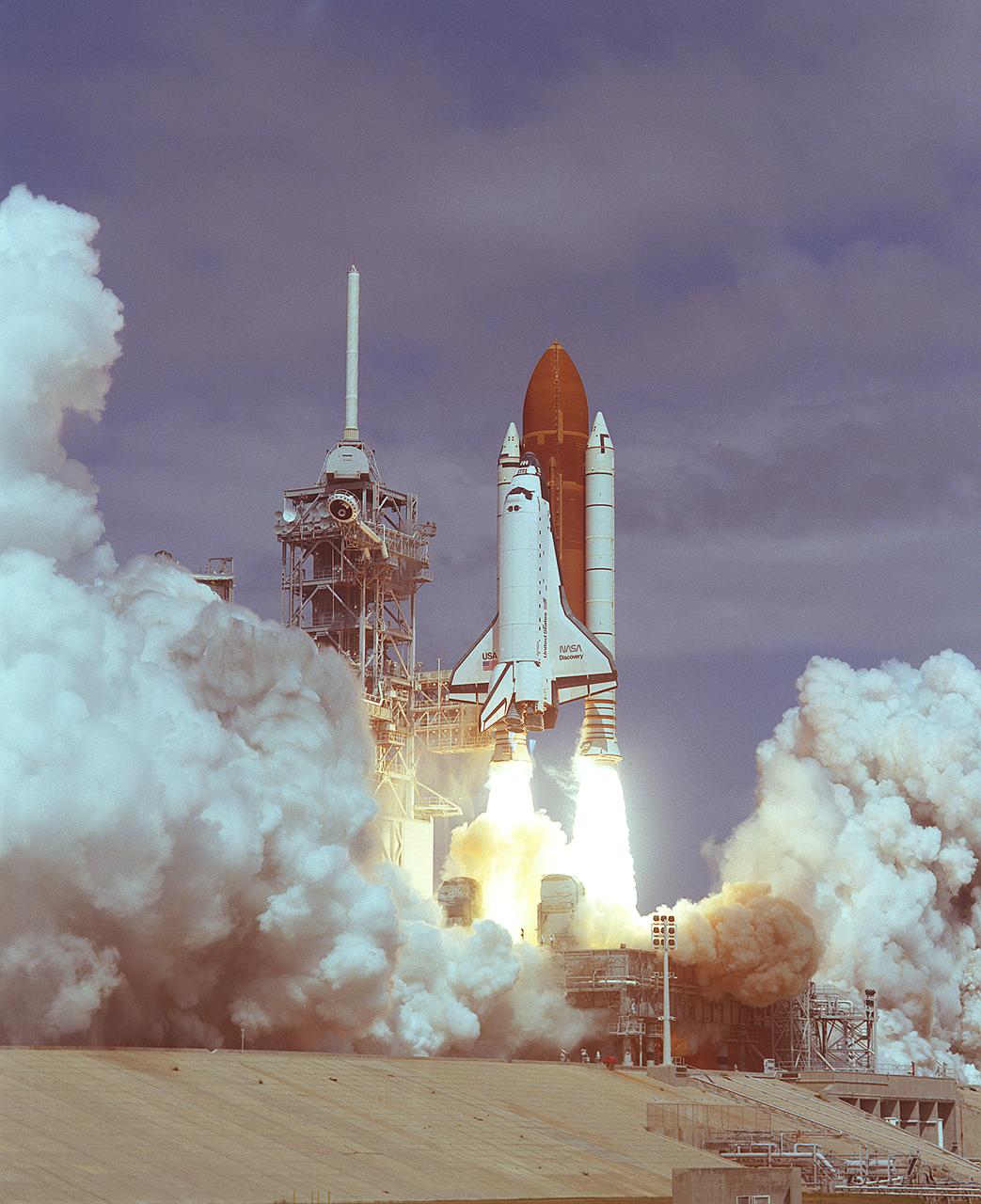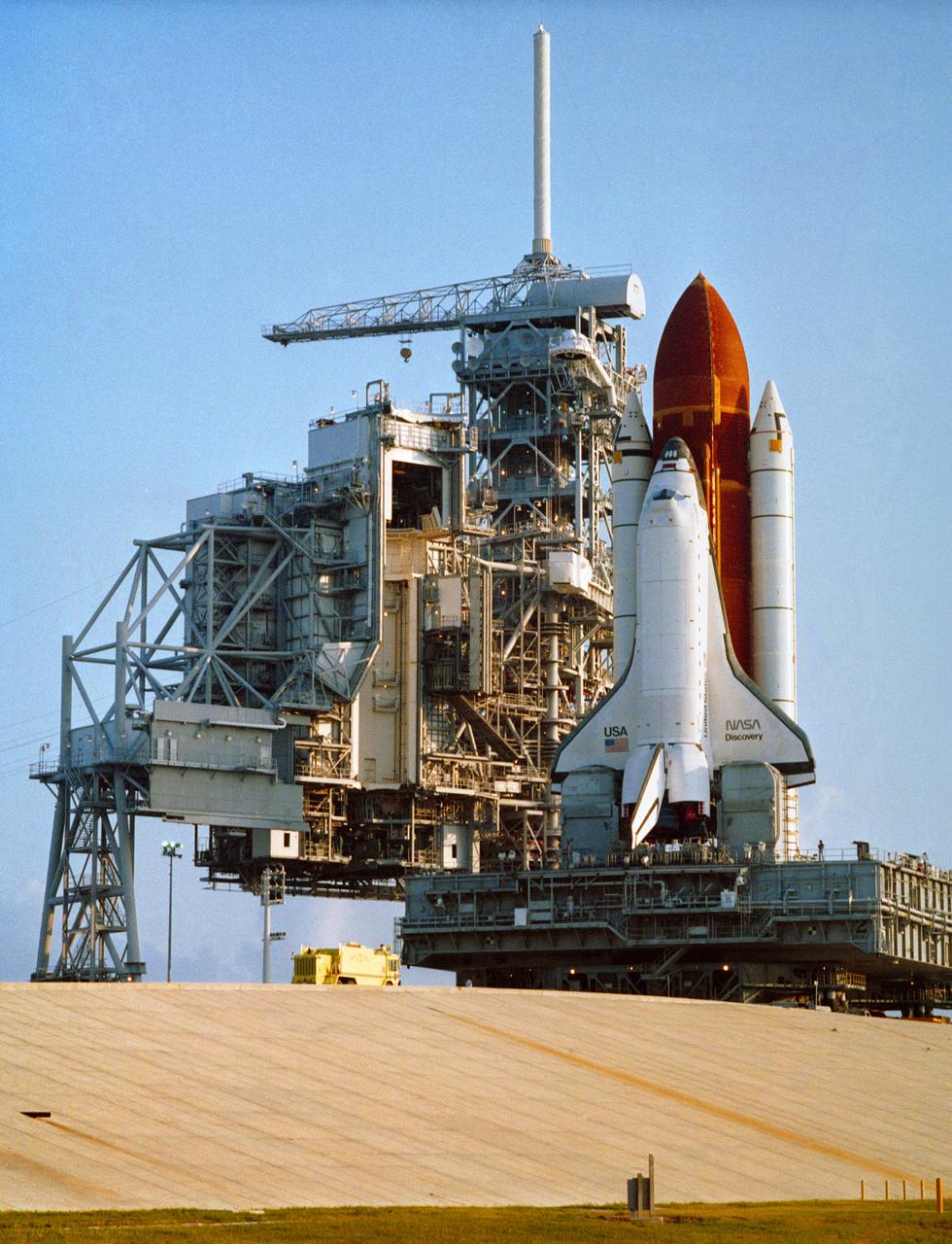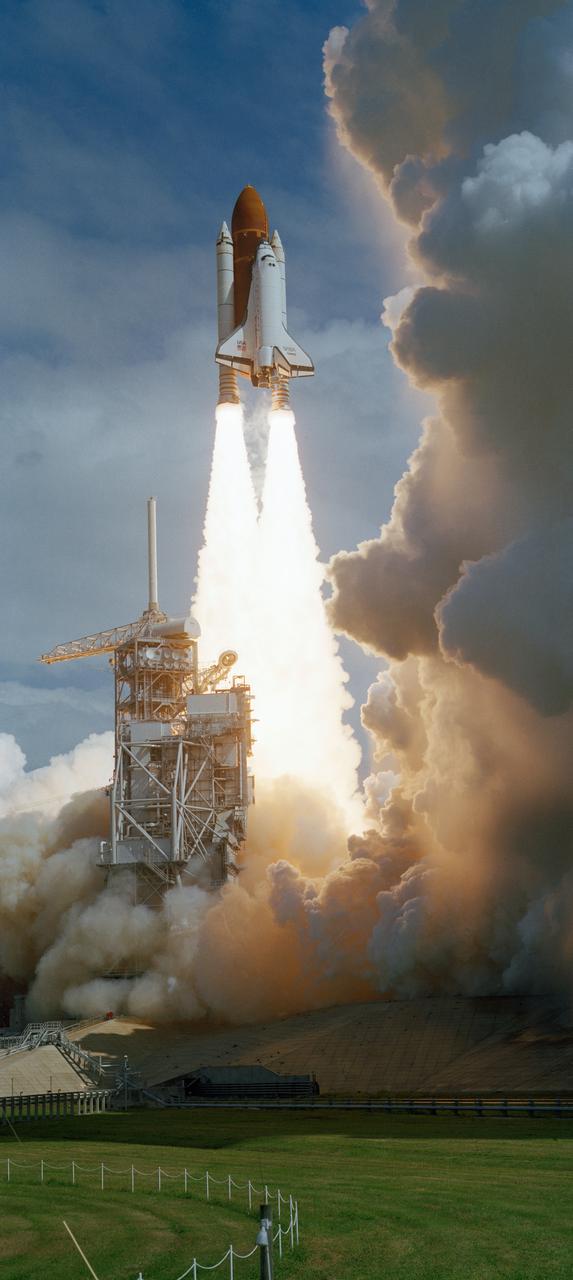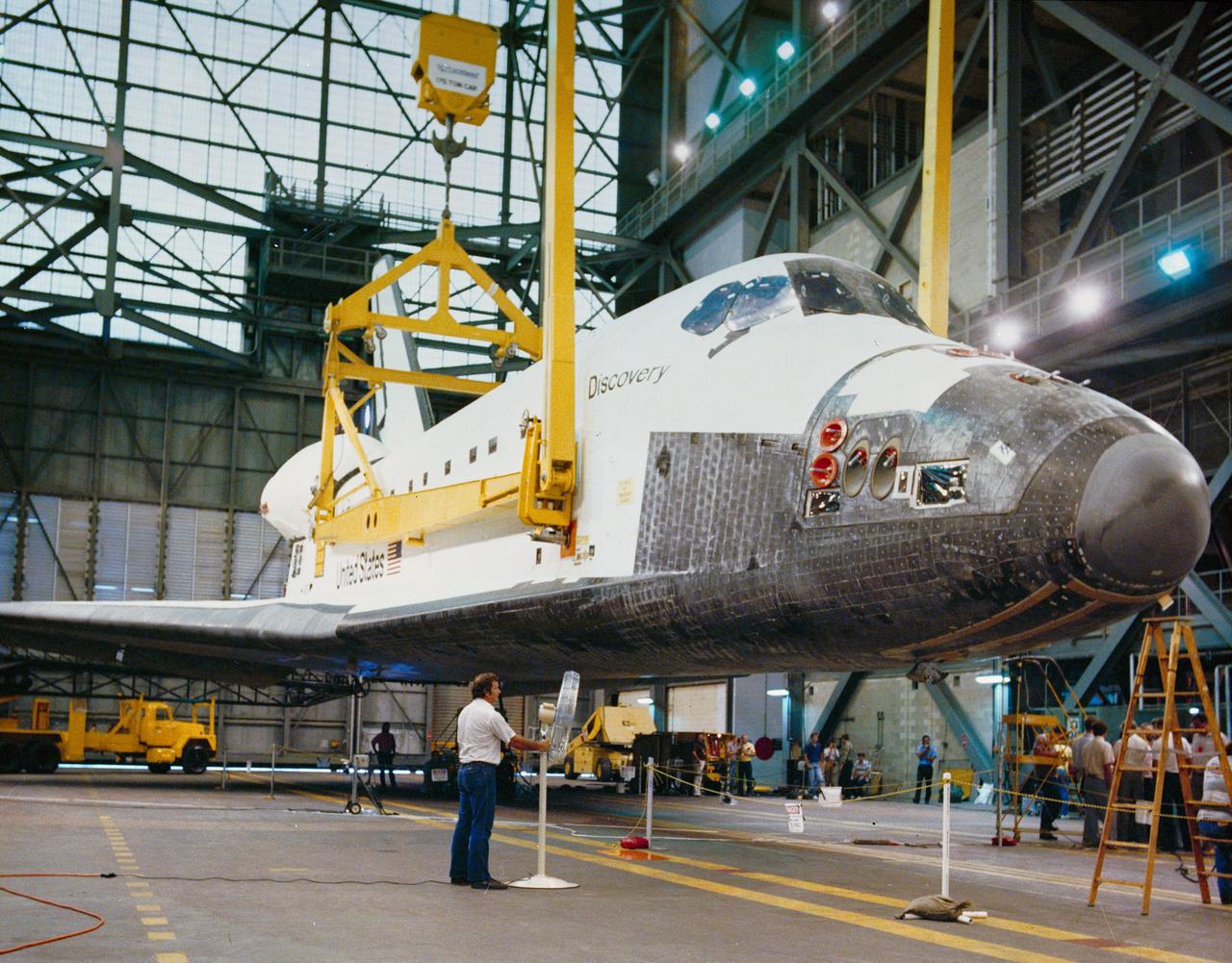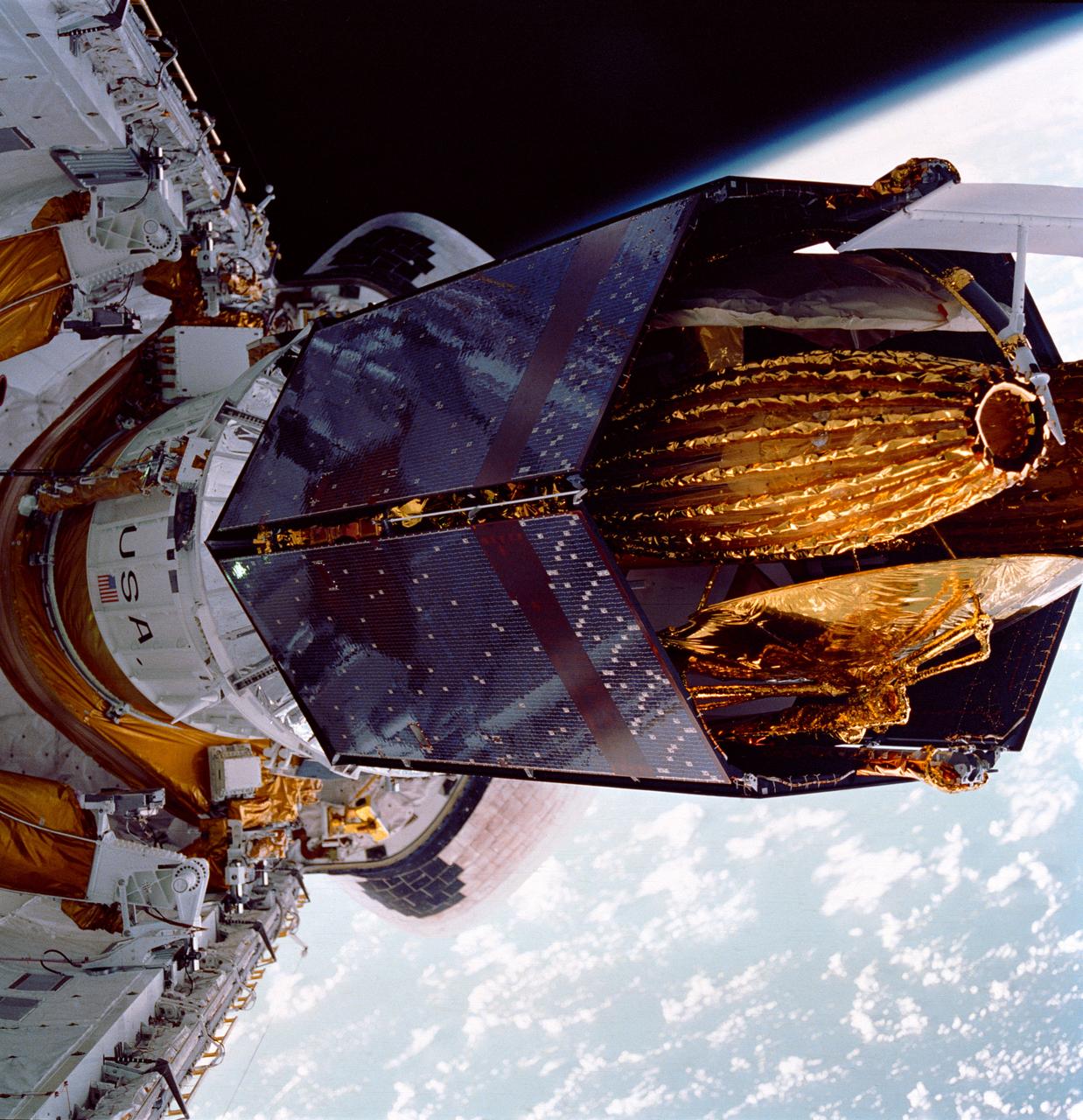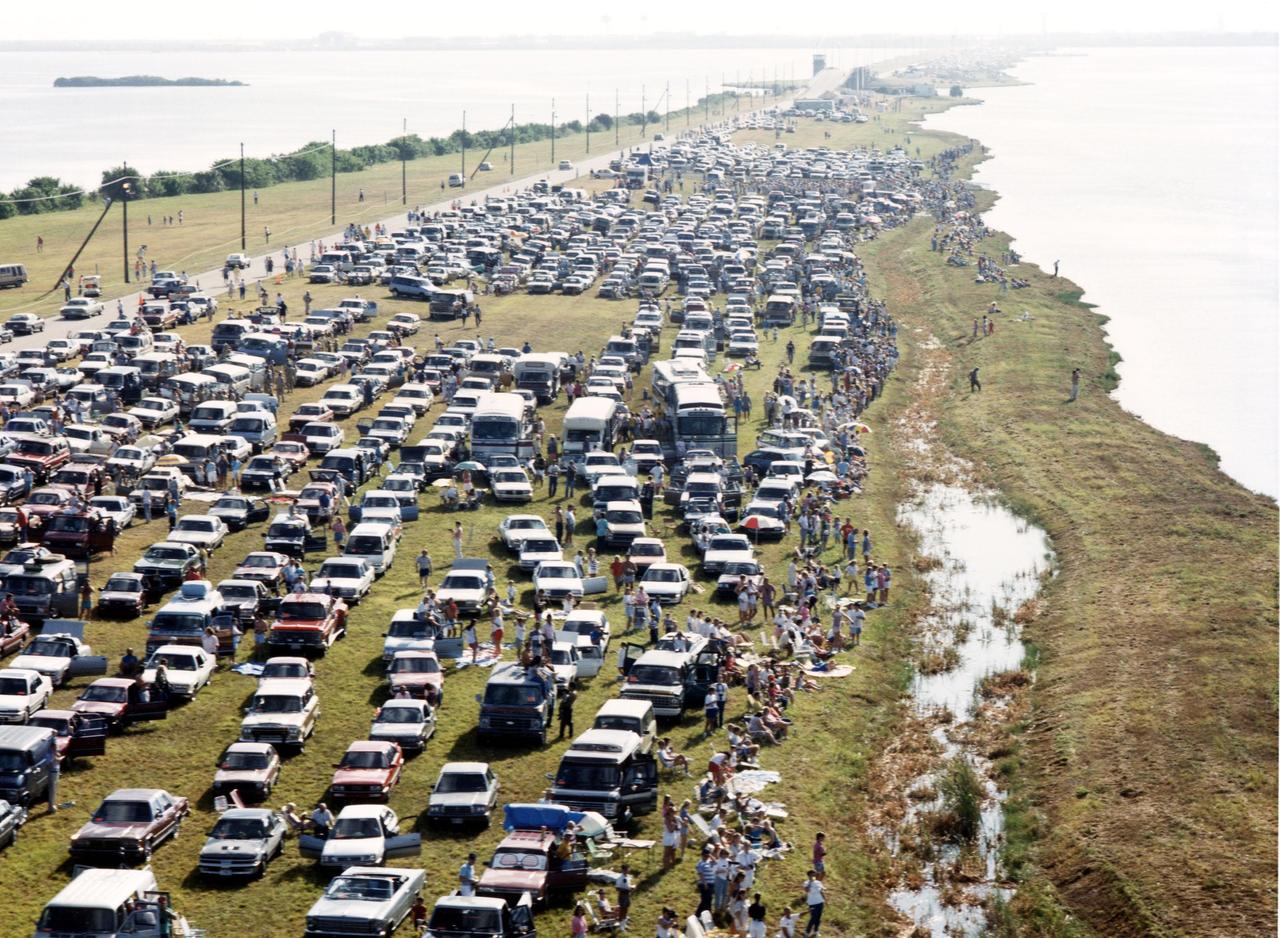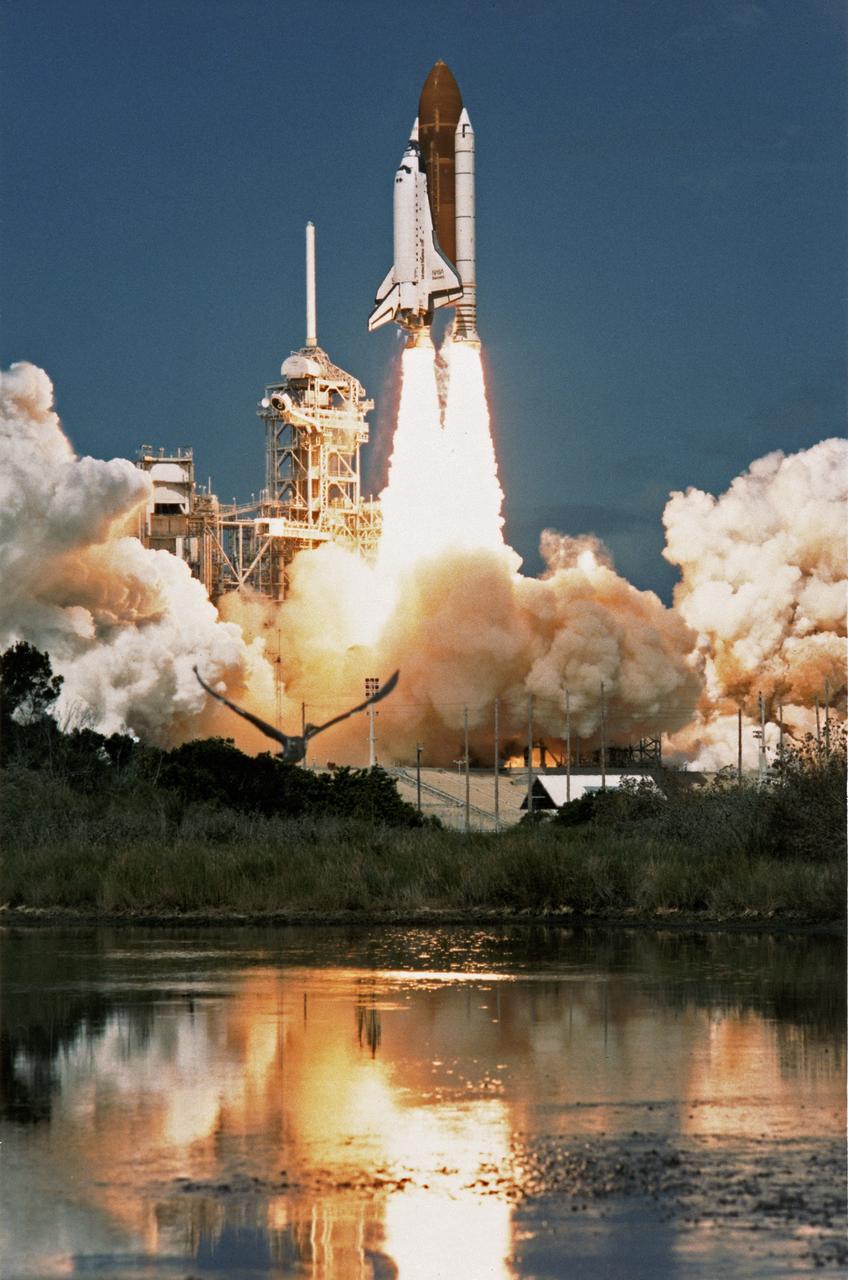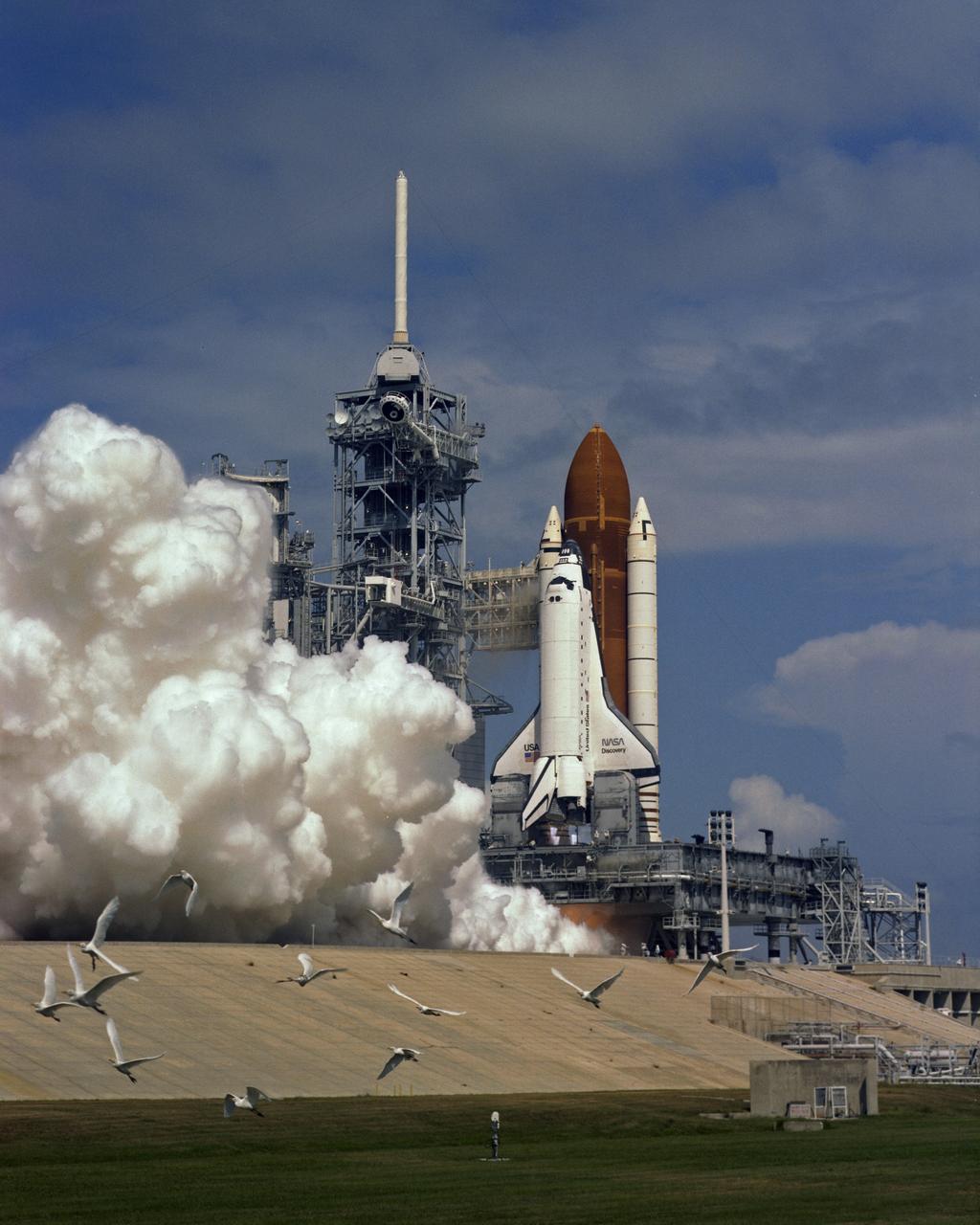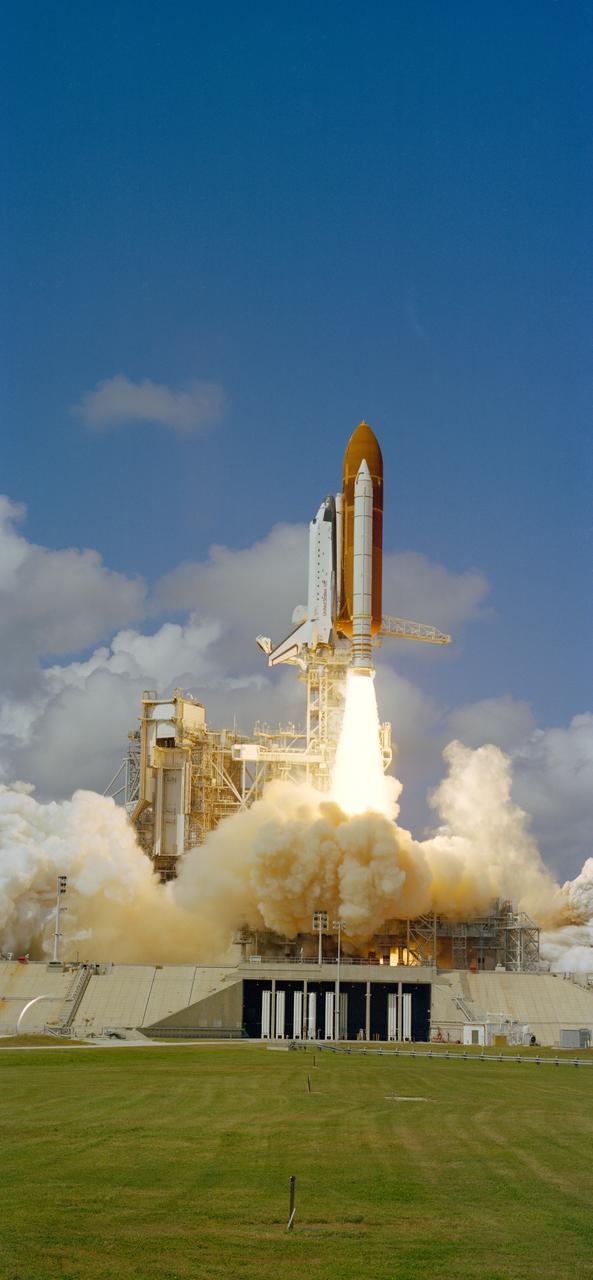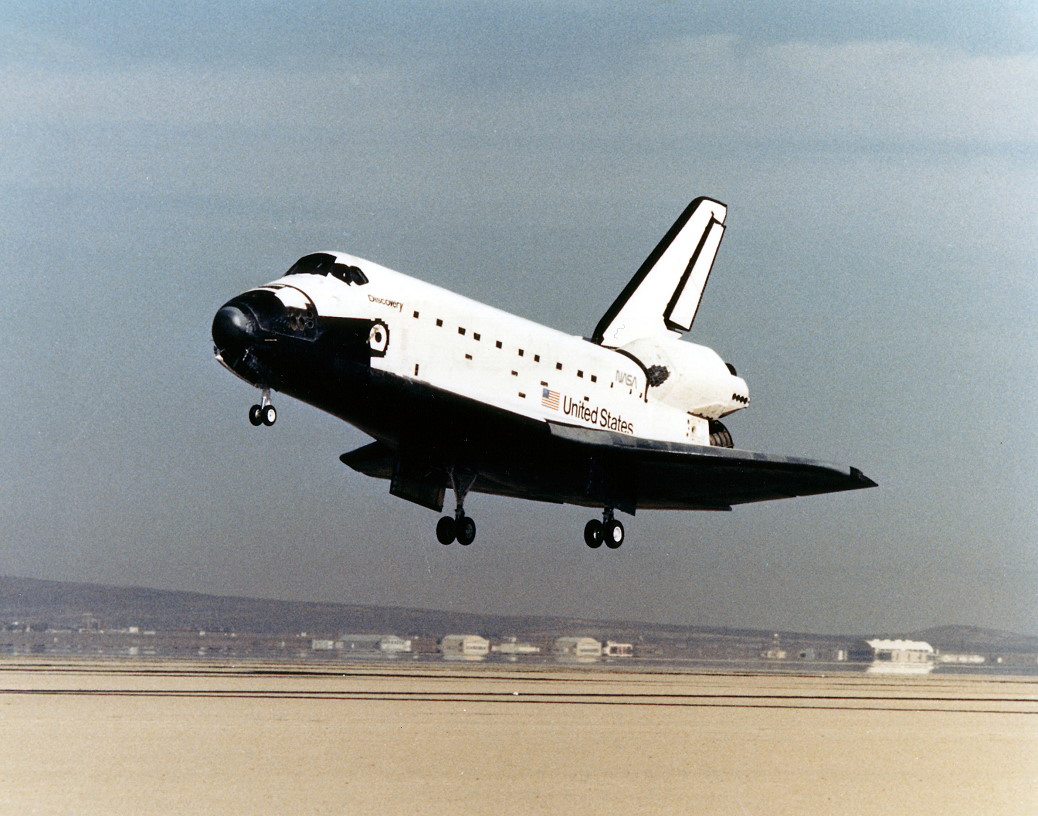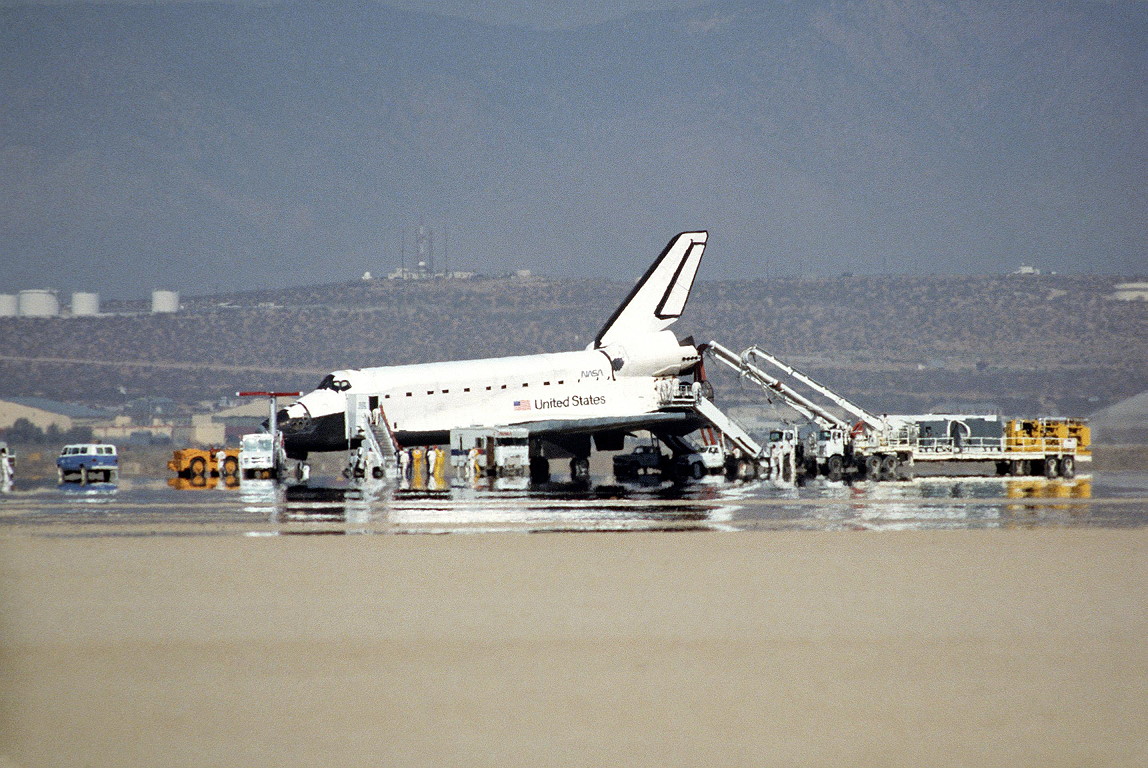STS-26 Fact Sheet
By Cliff Lethbridge

STS-26 — Discovery
26th Space Shuttle Mission
7th Flight of Discovery
Crew:
Frederick H. Hauck, Commander
Richard O. Covey, Pilot
John M. Lounge, Mission Specialist
David C. Hilmers, Mission Specialist
George D. Nelson, Mission Specialist
Orbiter Preparations:
Tow to Orbiter Processing Facility – October 30, 1986
Rollover to Vehicle Assembly Building – June 21, 1988
Rollout to Launch Pad 39B – July 4, 1988
Launch:
September 29, 1988 — 11:37:00 a.m. EDT. Launch was delayed 1 hour, 38 minutes to replace fuses in the cooling system of two of the crew’s flight pressure suits, and due to higher than expected upper atmosphere winds. Suit repairs were successful and wind constraints were waived as not being a sufficient deterrent to a nominal flight.
Landing:
October 3, 1988 – 9:37:11 a.m. PDT at Runway 17, Edwards Air Force Base, California. Rollout distance was 7,451 feet. Rollout time was 49 seconds. Mission duration was 4 days, 1 hour, 0 minutes, 11 seconds. Landing occurred during the 64th orbit.
Mission Summary:
NASA’s Tracking and Data Relay Satellite-3 (TDRS-3) was deployed using an Inertial Upper Stage (IUS) boost to geosynchronous orbit.
Secondary payloads included the Physical Vapor Transport of Organic Solids (PVTOS), Protein Crystal Growth (PCG), Infrared Communications Flight Experiment (IRCFE), Aggregation of Blood Cells (ARC), Isoelectric Focusing Experiment (IFE), Mesoscale Lightning Experiment (MLE) and Phase Partitioning Experiment (PPE).
Also flown were the Earth-Limb Radiance Experiment (ELRAD), Automated Directional Solidification Furnace (ADSF), two SSIP experiments and Orbiter Experiments Autonomous Supporting Instrumentation System-1 (OASIS-1), which recorded a variety of environmental measurements during various phases of the flight.
The Shuttle’s Ku-band antenna in the payload bay was deployed but did not function due to failure of dish antenna command and actual telemetry. During the mission, Discovery’s cabin Flash Evaporator System iced up, causing cabin temperatures to rise to the mid-80’s for much of the flight.
SELECTED NASA PHOTOS FROM STS-26
